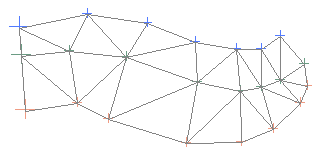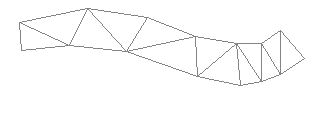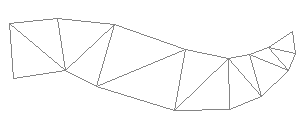|
|
Extracting information from loaded objects |
Extract Data Object
To access this dialog:
-
In the Loaded Data control bar, right click any object and select Extract.
-
In the Sheets control bar, right click any object and select Extract.
This dialog is used to derive information held within currently loaded data objects, and create new objects based on the values contained within a selected field.
|
|
As this process creates new objects based on the unique values of a selected field, there can be a potentially large number of new objects created during this process. For example, creating extracted objects for a complex DTM according to the X positional value may result in thousands of new files being created. For this reason, a dialog is shown before the extract operation begins to tell you how many new objects are to be created. |
You can create extracted objects by either specifying a field within the object's database, meaning all unique values found will be used as a basis for creating a new object, or you can use filter expressions to declare how the original object data is to be used during extraction.
|
|
It is not possible for block model objects to be used for extraction. The function is restricted to point, string and wireframe data only. |
Example of Extraction By Field Value:
The simple wireframe object below is comprised of three linked strings:

Running the Extract Object utility, and selecting the LINK field to act as the extraction key (two link values are present in the database to representing the linking meshes between each of the the three lines), results in the following message:

Selecting Yes shows a series of two alternating progress bars (Apply Filter and Copy File). Two new object files are created. You can see their descriptions in the Loaded Data control bar:
![]()
The description is formed from the original filename(s) combination, followed by the details of the field used to split the original file, and the value of the field in the new file.
|
|
The newly created objects are not yet saved onto disk, or included within the current project file. You should save your project after running this operation. TheLoaded Datacontrol bar shows all in-memory objects, whether saved to a file/project file or not. When saved, these files are then available for loading/selection in theProject Filescontrol bar. |
From the Loaded Data control bar, you can show or hide the new objects:

and;

Field Details:
The following fields are available:
Object Name: Note that this field will only be available if a block model was right-clicked in the Loaded Data control bar; for other objects the name of the object in context is presented in a read-only format.
|
|
the name of the object is redetermined if this dialog was opened from Data Object Manager, otherwise choose a name from the drop-down list. |
Choose an Extraction Method: two methods are available: Extract By Field or Extract Using Filter:
-
Extract By Field: select a field from the drop-down list. All unique values found within the selected object's database will result in new object creation.
-
Extract Using Filter: select this option to either enter a filter expression manually, or use one of the following options (availability depends on the object type selected):
-
-
Select By Group: select a data group from the using the cursor. A filter expression will be created based on the selection.
-
Select By Surface: select a surface using the cursor. A filter expression will be created based on the selection.
-
Select By Attribute: select an attribute using the cursor. A filter expression will be created based on the selection.
-
Custom: activates the Filter Wizard button.
-
Filter Wizard: opens the Data Expression Builder dialog, allowing you to build filter expressions.
-
|
|
Filter expressions will be accepted after a cursory check of syntax, however, if a filter expression is valid (in that it contains syntax in the correct structure) but is intended for filtering data fields that do not exist in the incoming file, the file will be loaded without filtering. For example, if you elect to filter a wireframe model based on, say, an XP field, but this field does not exist in the loaded file - the entire contents of the file will be loaded. In other words, filtering will not be performed. |
|
|
Related Topics |
|
|
Object
Manager Dialog Data Expression Builder |

